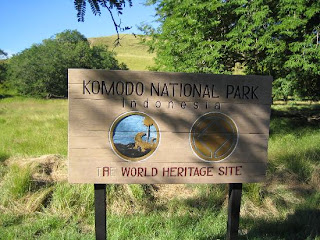
Although the oldest written reference to the city dates back to 1488, there were numerous archaeological finds of Australopithecus (Java Man) that lived on the banks of Cikapundung river and the shores of Bandung's Great Lake.
In the 17th-18th century, the Dutch East Indies Company (VOC) created small plantations in Bandung, with a road to Batavia (today's Jakarta) completed in 1786. In 1809, Louis Bonaparte, the ruler of the Netherlands and its colonies, ordered the Dutch Indies Governor H.W. Daendels to improve Java's defenses against the threat of the English, who occupied the nearby Malay peninsula. Daendels responded by building the Great Post Road (De Groote Postweg) that stretched about 1000 km between the west and the east coasts of Java. Because north coast was in the form of impassable swamps and marshes at the time, the road was diverted through Bandung along what is now Jalan Asia-Afrika.
Daendels liked Bandung's strategic location so much that he ordered the capital to be moved there. Military barracks were built and Bupati Wiranatakusumah II, the chief administrator of that area, built his dalem (palace), Masjid Agung (the grand mosque) and pendopo (meeting place) in the classical Javan alun-alun (city square) near a pair of holy city wells (Sumur Bandung) and facing the mystical mountain of Tangkuban Perahu.
Powered by its cinchona (for malaria drug quinine), tea, and coffee plantations, Bandung prospered and developed into an exclusive European style resort with hotels, cafes, and shops. Many of Bandung landmarks, including the Preanger and Savoy Homann hotels, as well as the shopping street of Jalan Braga, are still available today. The Concordia Society building, now Gedung Merdeka, was built with a large ball room as a club for rich Europeans to spend their weekends.
In 1880, the first major railroad between Jakarta to Bandung opened, boosting small industries and bringing in Chinese workers. The first of Bandung universities, the Technische Hogeschool (TH) was established on July 3rd, 1920. One of the its alumni members is President Soekarno himself. That university is now known as the Institut Teknologi Bandung (ITB)
In 1942, after Japanese soldiers landed in coastal areas of Java, the Dutch retreated from Jakarta to Bandung, but were driven out from there as well and surrendered soon after. After the end of the war, the Dutch came back with a vengeance and on March 24, 1946, during the struggle for Indonesian independence, the city of Bandung was burned down by its residents (Bandung Sea of Fire/Bandung Lautan Api) as a sign of refusal to surrender. Over 200,000 people fled the city during the incident.
In 1955, the Asia Africa Conference (Konferensi Asia Afrika) was held in Bandung, paving the way for the creation of the Non-Aligned Movement in 1961. The Indonesian parliament was located in Bandung from 1955 to 1966, but was moved back to Jakarta in 1966.
Source: iguide.travel





































